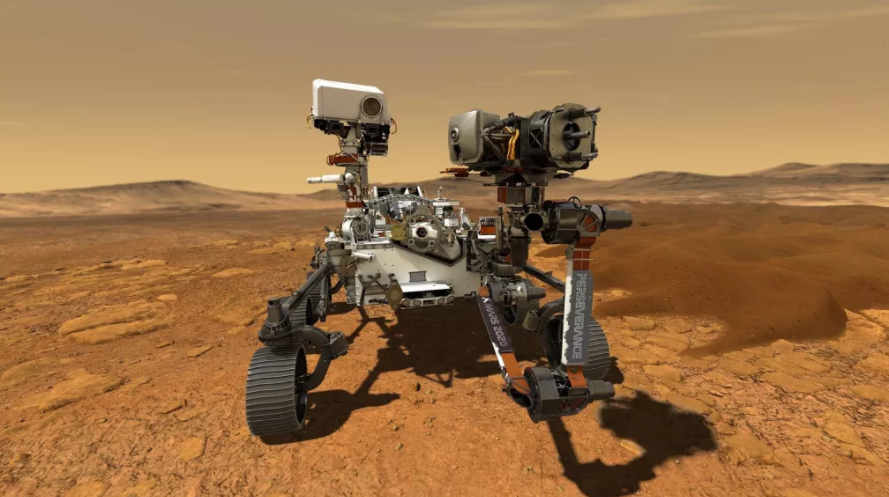Perseverance - NASA's Mars Rover
- jiyajose
- Feb 22, 2021
- 3 min read
Updated: Mar 31, 2021
Excitement and applause took over the mission control room as the highly anticipated NASA’s Perseverance Rover touch downed successfully on Mars on February 19th, 2021 at 3:55 ET. The rover ‘Percy’, as it is affectionately called, landed on the Jezero Crater after a long journey of 295.3 miles which took seven months to complete.
The Perseverance rover, living up to its name, is NASA’s fifth rover and the first mission to materialize amidst a global pandemic. The Perseverance had to go through the so-called ‘seven minutes of terror’ which is only the beginning of Perseverance. The ‘seven minutes of terror’ is the entry, descent, and landing (EDL) phase of a Mars mission as the rover is on its own once it enters Mars’ atmosphere. This sequence is often spine-chilling due to it transpiring faster than the radio signals can reach Earth.
With the triumphant landing of the rover came images sent by the rover, which included a ‘selfie’ of the rover moments before touchdown. The chief engineer of the project, Adam Stelzner, compared the photo to that of the iconic shot of Buzz Aldrin standing on the moon in 1969 and called it ‘absolutely exhilarating’. NASA hopes to obtain more pictures, videos, and even audio in the coming weeks from the rover.
While the Curiosity rover was in search of habitability, the Perseverance is in search of water and proof of past life. The rover is set to explore the Jezero Crater during the course of its two-year mission and explore for microfossils and in the rocks there. Evidence suggests that the Jezero Crater was once an ancient lake that existed 3.9 billion years ago which now contains sediments of carbonates and clay. Since the crater is thought to have been a lake, with that arrives a possibility of the past existence of life.
The rover also carried with it the Ingenuity helicopter, which is an experiment to fly a helicopter on another planet for the first time. Its main objective is to examine whether the flight is possible on the planet. The Ingenuity once deployed onto the Martian surface will be charged via its own solar panels, and will have to survive the frigid conditions of the red planet’s atmosphere. Only then will it be able to take its first flight, which is planned to be around 20 seconds.
With many firsts in its endeavor, while past rovers have brought much information, the Perseverance will also be the first rover to bring the sound of the red planet to Earth. Equipped with microphones, the rover will carry back to Earth, the true audio of Mars.
To accomplish the long journey that Perseverance has set forward, it will drive three times faster than older rovers, at around 0.1 miles per hour. The rover carries with it seven primary instruments, including the Mars Oxygen ISRU Experiment (MOXIE) which is a technology to produce oxygen from Mars’ carbon dioxide. The rover will collect samples for more intricate analysis to determine ancient life on Mars along with understanding the climate and geology. NASA has already devised a method that involves another rover to return these samples back to Earth which is due in the 2030s.
Upon determining whether life existed on Mars, and after characterizing the geology and climate of Mars, the goal is to prepare for human exploration. With the huge feats attained in the exploration of Mars, NASA is getting closer with every passing moment to the goal of landing the first man on Mars.






















Comments